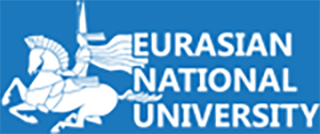Abstract
Detection of chromium (VI) metal ions using fish gelatin-based electrodes and silvermodified carbon electrodes (FGC-AgE) has been successfully developed. Chromium (VI) is a toxic heavy metal commonly found in contaminated water sources and poses significant risks to human health and the environment. Therefore, monitoring and control of Cr (VI) are very important. The purpose of this study was to develop a sensitive and selective electrochemical sensor for detecting Cr (VI) in water. The research stages include: (1) extraction of fish gelatin, (2) fabrication of FGC-AgE working electrodes, and (3) analysis of electrode performance. The tests include optimization of pH, concentration effects, selectivity to other ions, and repeatability tests. All analyses were carried out using the cyclic voltammetry method in the potential range of -1000 mV to +1000 mV with a scanning rate of 100 mV/s. The results showed that FGC-AgE worked optimally under alkaline conditions, with the highest current response at a potential of -0.249 V. This electrode has a measuring range of 1-7 μM, a detection limit of 0.295 μM and a sensitivity of 14.32 μA.μM⁻¹.mm⁻². In addition, FGC-AgE showed high selectivity towards Cr (VI) and was not affected by the presence of other metal ions such as iron, cadmium, lead, copper, and chromium (III). Repeated tests showed consistent electrode performance. In summary, FGC-AgE electrode has the potential to be an effective and reliable alternative for detecting Cr (VI) ions in the future.
Article Type
Original Study
First Page
1
Last Page
19
Creative Commons License

This work is licensed under a Creative Commons Attribution 4.0 International License.
Recommended Citation
Hutapea, Tri Paus Hasiholan; Muliyadi, Muliyadi; Rukisah, Rukisah; Suprapto, Suprapto; and Kurniawan, Fredy
(2024)
"Development of a Chromium (VI) Biosensor Using Silver-Modified Milkfish (Chanos chanos) Gelatin and Carbon Electrodes,"
Eurasian Journal of Physics and Functional Materials: Vol. 8:
No.
4, Article 3.
DOI: https://doi.org/10.69912/2616-8537.1234

